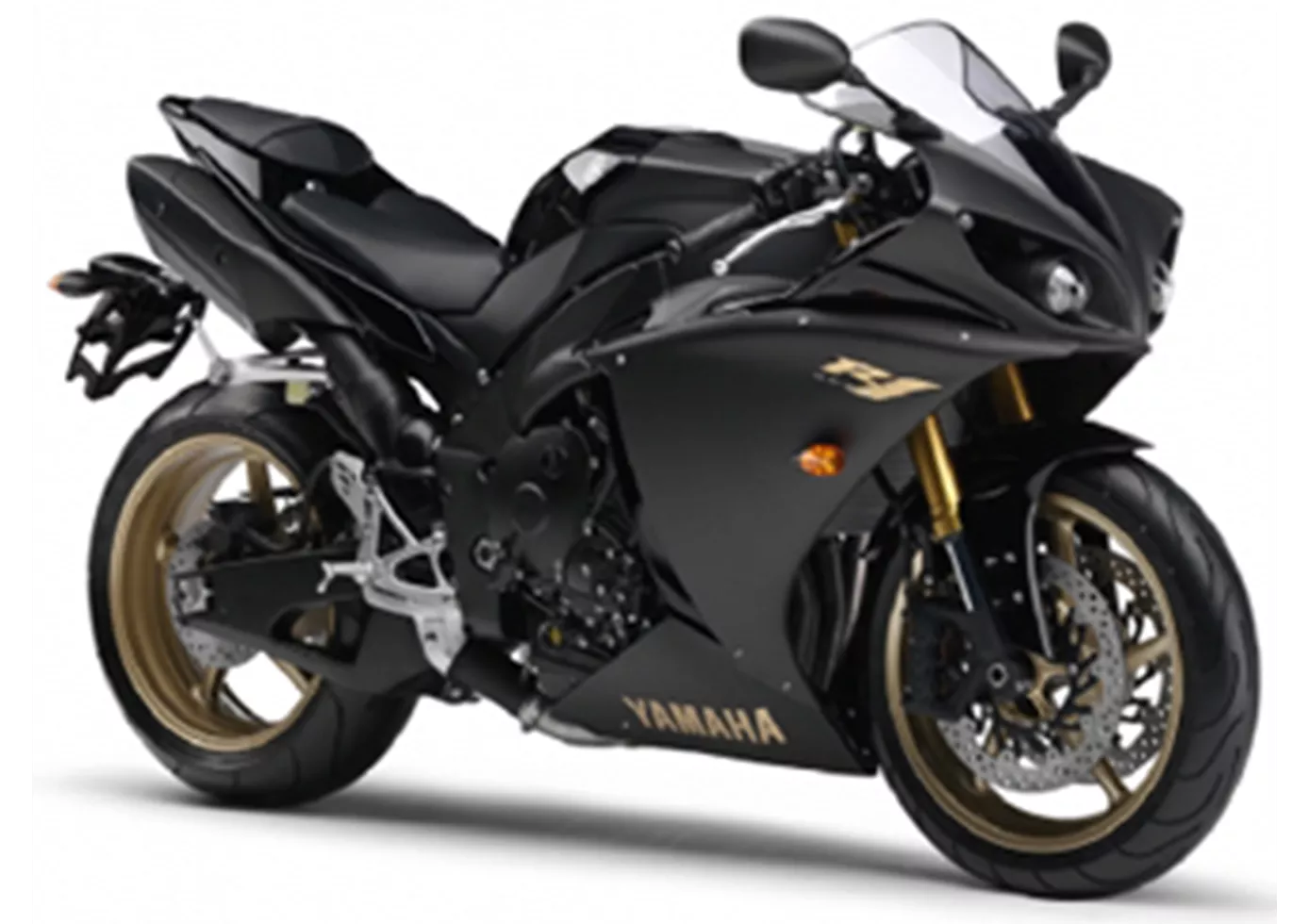Yamaha R1 2010 vs. Suzuki GSX-R 1000 2009

Yamaha R1 2010

Suzuki GSX-R 1000 2009
Visão geral - Yamaha R1 2010 vs Suzuki GSX-R 1000 2009
The Yamaha R1 model year 2010 and the Suzuki GSX-R 1000 model year 2009 are both supersport motorcycles that offer high performance and advanced features. However, there are some notable differences between the two models.
In terms of engine specifications, the Yamaha R1 2010 has a larger bore of 78 mm compared to the Suzuki GSX-R 1000 2009 with a bore of 74.5 mm. The stroke on the Yamaha R1 is 52.2 mm, while the Suzuki GSX-R has a stroke of 57.3 mm. This indicates that the Yamaha R1 has a shorter stroke, which can contribute to higher revving capabilities. The Yamaha R1 also has a higher horsepower of 181 HP compared to the Suzuki GSX-R's 136 HP. However, the Suzuki GSX-R has a slightly higher torque of 116.7 Nm compared to the Yamaha R1's 115.5 Nm. Both motorcycles have 4 cylinders and utilize DOHC valve systems. The displacement of the Yamaha R1 is 998 ccm, while the Suzuki GSX-R has a displacement of 999 ccm.

Yamaha R1 2010
In terms of chassis, both motorcycles feature aluminum frames. However, the Yamaha R1 has a Deltabox frame, which is known for its rigidity and stability, while the Suzuki GSX-R has a twin-spar frame, which offers improved handling and responsiveness.
Both motorcycles are equipped with dual disc front brakes for optimal stopping power. The dimensions and weights of the tires are the same for both models, with a front tire width of 120 mm and a rear tire width of 190 mm. The diameter of the tires is 17 inches for both models. The wheelbase of the Yamaha R1 is slightly longer at 1415 mm compared to the Suzuki GSX-R's 1405 mm. The seat height of the Yamaha R1 is also higher at 835 mm compared to the Suzuki GSX-R's 810 mm. In terms of weight, the Yamaha R1 is slightly heavier with a curb weight of 206 kg compared to the Suzuki GSX-R's 203 kg. Both motorcycles have fuel capacities of 18 liters and 17.5 liters respectively.
In terms of strengths, the Yamaha R1 2010 is praised for its strong engine, sophisticated character, optimized braking system, and comfortable seating position. On the other hand, the Suzuki GSX-R 1000 2009 is commended for its improved geometry, compact engine design, relaxed seating position, multiple height adjustment system, and anti-hop clutch.

Suzuki GSX-R 1000 2009
However, there are also weaknesses associated with each model. The Yamaha R1 2010 is criticized for its suboptimal suspension elements, lower peak power, slightly weak traction, and higher weight. The Suzuki GSX-R 1000 2009 has drawbacks such as less than ideal accessibility for compression adjustment, weakness in the lower rev range, and not being suitable for beginners.
In conclusion, both the Yamaha R1 2010 and the Suzuki GSX-R 1000 2009 are powerful and advanced supersport motorcycles. While the Yamaha R1 offers a stronger engine and optimized braking system, the Suzuki GSX-R has improved geometry and a more relaxed seating position. However, it is important to consider the weaknesses of each model, such as the suboptimal suspension elements of the Yamaha R1 and the less than ideal compression adjustment accessibility of the Suzuki GSX-R. Ultimately, the choice between the two models will depend on the rider's preferences and priorities.
Especificações técnicas Yamaha R1 2010 em comparação com Suzuki GSX-R 1000 2009
Prós e contras em comparação
Prós e contras em comparação
Yamaha R1 2010

O atual motor da R1 marca pontos acima de tudo com o seu som inconfundível, resposta muito transparente e entrega de potência linear. Em termos de potência de pico, no entanto, a Yamaha teve que reduzir um pouco.
Suzuki GSX-R 1000 2009

A GSX-R 1000 continua a ser algo para o condutor experiente, apesar da sua condução precisa e equilibrada e da entrega de potência controlável. A Suzuki sabe que mil deve permanecer mil e segue rigorosamente este princípio. Esperemos que continuem a fazê-lo durante muito tempo.
Comparação de preços Preço médio de mercado Yamaha R1 vs Suzuki GSX-R 1000
There are a few key differences between a Yamaha R1 2010 and a Suzuki GSX-R 1000 2009. In terms of price, the actual average price of a Yamaha R1 2010 is about 27% higher. Compared to Suzuki GSX-R 1000 2009 there are less Yamaha R1 2010 bikes available on the 1000PS.de Marketplace, specifically 5 compared to 6. It takes less time to sell a Yamaha R1 with 53 days compared to 64 days for a Suzuki GSX-R 1000. Since model year 2005 1000PS.de editors have written 80 reviews for the Yamaha R1 and 71 reviews for the Suzuki GSX-R 1000 since model year 2005. The first review for the Yamaha R1 was published on 28/04/2003 and now has more than 3 900 views. This compares to more than 7 100 views for the first review on Suzuki GSX-R 1000 published on 03/03/2004.






















